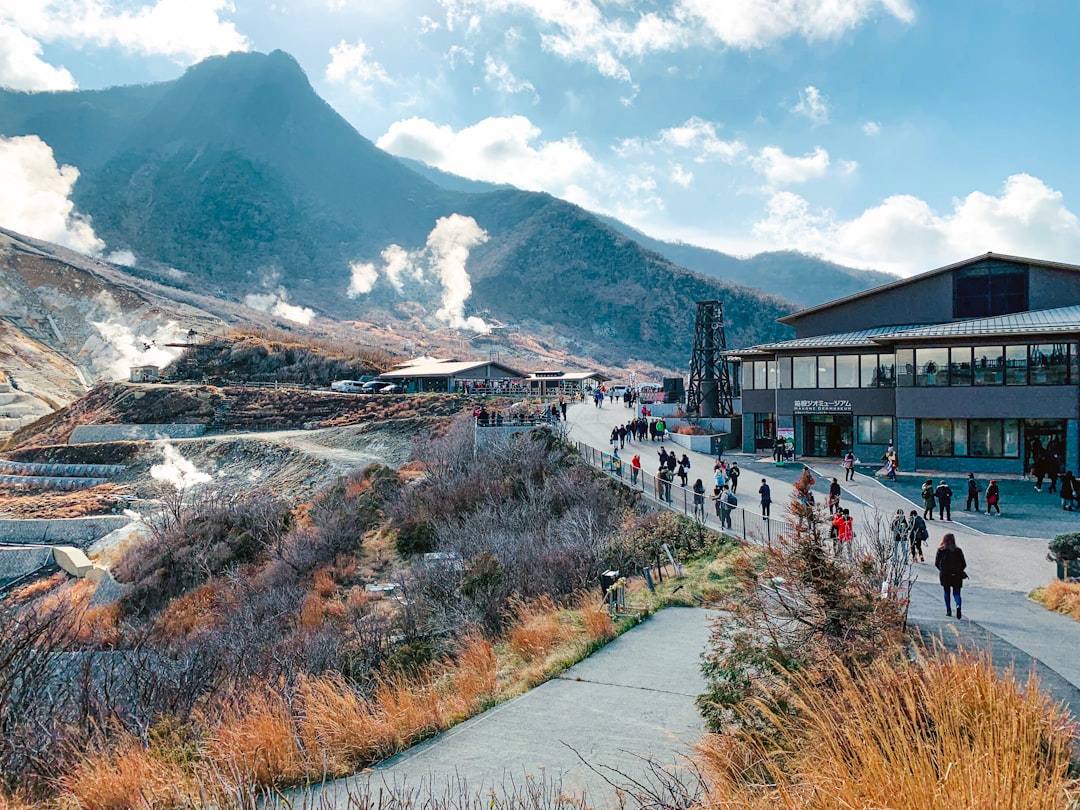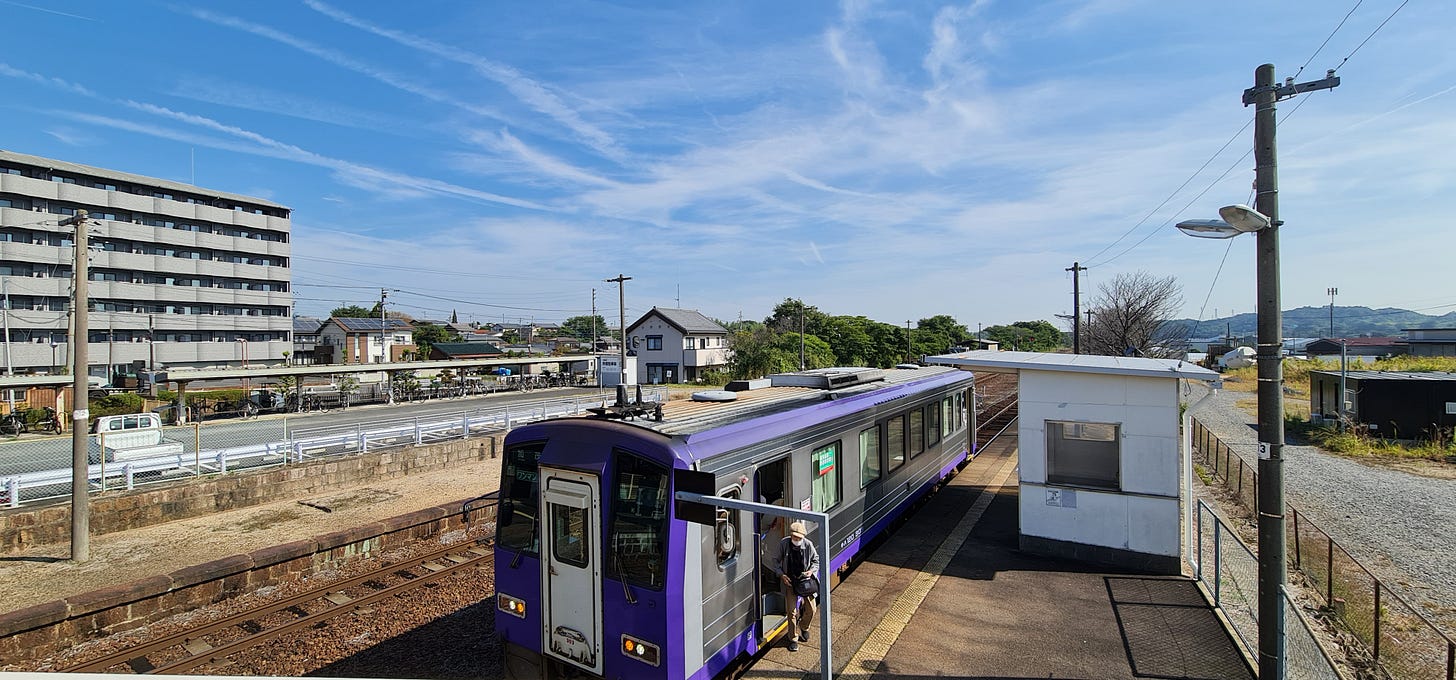The great roadtrip has been mythologised since the invention of the wheel. Every country seems to have a few trails that embody more than just gravel and mud. Think of Route 66 and the concept of the untamed American West, or the ancient trek that the Inca Trail provides for modern day Peruvians. Neither of these trails were established as anything beyond the easiest route between two major destinations.
Over time, these tracks are no longer the most efficient way between the stops, and are eventually bypassed for something faster. Given another dozen or hundred years, much like other retro remnants, some of these old tracks swing back into fashion and become memorialised.
This happened with the Tōkaidō Road in Japan. Once the main highway in 1600’s Edo Period between the leading cities Edo (now Tokyo) and Kyoto, the road was speckled with important stops. Everyone who needed to go from one city to the other would travel this road, which meant basically every historically significant person in Japan during that period transited through.
The Hiro(shige)’s Journey
Even with the Shinkansen with its modern wheels and shiny motors, it takes at least three hours to get from present-day Tokyo to Kyoto. Taking much longer on foot, the Tōkaidō Road (and its frequent artist travellers) became a cultural landmark for the Edo Period.
Documenting the Tōkaidō trip was easily managed with clearly set markers in the form of the fifty-three stations, dotted about 10km apart, where travelers could find rest and respite. The most well known depiction of these sites is uncreatively named “The Fifty-three Stations of the Tōkaidō” (東海道五十三次), a series of 55 wood prints (including terminal stops) made by Utagawa Hiroshige. His prints are among the most prized art works from the Edo Period with outsider art admirers such as Frank Lloyd Wright being a noted collector.
Where we’re going, we do need roads
Unfortunately, only a very small section of the Tōkaidō Road remains. These are dotted across the old paths, with many of the other parts of the road lost to time, or made way for faster routes. A useful comparison is Yokkaichi as seen in the famous wood print, and Yokkaichi as seen in a 2023 photo.
If you were able to see the subtle differences between these two images, you might begin to see how Japan has changed as a country. Likewise, their roads and transportation systems have evolved. But if you’re looking to visit the Old Tōkaidō Road, might I suggest the following?
Resting rich place
Rest stops (sabisu eria/michi no eki) are the modern inheritors of the Tōkaidō Road. Before you think of the less-than-sanitary rest stops or refuelling stations found on other country roads in other country places, the Japanese versions are a destination of themselves and offer a panoply of dining, shopping and even entertainment options. I’ve written briefly on them before, but much like the road stops of yore, these stations are truly an oasis on an otherwise endless highway system. Seasonal street food is usually available; I recall pumpkin soft serve as a vendor option, and even a pop-up Gundam store.
But the true purpose of the Japanese rest stops is actually state propaganda. Hear me out.
Every rest stop in Japan sells specialty souvenirs showcasing the best of its local prefecture. These stops take the thinking out of souvenir shopping when you’re on the road, because no matter which item the area is famous for, you’ll be able to find a row of it in these service areas. From pearls to fried chicken, modern day michi no eki are the 10-minute distillations of an entire prefecture, advertising the very best of what that region has to offer.
I have to believe that the Old Tōkaidō Road operated similarly. After all, they too, were rest and trading posts, where ancient transit would pass through exchanging news and goods from the year’s harvest. Only now the modern service area displays the news on an electronic billboard, and the harvests are packaged in plastic and lit up with LEDs. Aside from these minor changes, the Old Tōkaidō Road spirit is alive and well across each of Japan’s motorways.
Take my horse to the Old Tōkaidō Road
If, for some reason, you wanted to explore the ancient trading route beyond a service area on a busy Japanese highway, I can suggest two where both the spirit and the letter of Old Tōkaidō Road has been kept intact.
Once upon a time, Seki (with the added Juku meaning post-town) was a key part of the map (For those who like to keep count, this was post 47 of the 53 stops). Nowadays it’s a tiny town that is serviced by an hourly one-carriage train, surrounded by mountains.
Venturing about ten minutes walk from Seki Station takes you back in time. Perhaps Seki’s relative lack of importance in modern Japan was key to perfectly preserving its ancient post-town setting. Beset by the Suzuka Mountain range in the background, hundreds of historical wooden buildings remain untouched by the ravages of modernity.
The road itself is barely wide enough for a car, and it is easy to picture old horse-drawn carriages idling in. Even as modern transport occasionally rolls through Seki, there is a sense that it is the vehicles that are out of place rather than the road. The area is no tourist trap either, being too out of the way for anyone on a highlights tour of Japan to visit. For anyone hoping to live their Edo-style life for half a day, this ancient pit stop is perfect.
While I cannot emphasise enough how great it is visiting Seki-Juku, it has fallen out of favour and is no longer a part of the modern trip from Tokyo to Kyoto. For those who wish to experience a more accessible section of the Old Tōkaidō Road (with significantly more tourists), I can suggest Hakone.
Hakone Matata
In contrast to Seki, Hakone is by far the most popular location for journeyers who want a piece of the Old Tōkaidō Road action. For ancient road-spotting purposes, the city is one of the few that managed to keep most of their incoming and outgoing trails intact. Hakone was one of the few areas around Tokyo able to avoid any involvement with the National Highway 1, meaning its ancient roads are much better preserved.
Being the 10th station, the scenery is much different from Seki, swapping out the Suzuka Mountains for Mt Fuji. The renewed interest in this trip has culminated in specific Old Tōkaidō Road landmarks being brought back to life in the area, which in turn allows travellers to be brought back in time.
While the straight train to Hakone station is the most common way for people to arrive these days, the Yumoto Station also marks a great starting point for walking exploration of the Old Tōkaidō Road. Following the arrival into Yumoto station, passengers will find themselves dumped at the base of a mountain pass.

This offers the “full” experience of the road, as by walking you’ll pass each of the painstakingly restored buildings and monuments on your way to Hakone. Following this path, it’s easy enough to follow the day trippers on their exploration of the classical sights.
For anyone wanting to step into the shoes of a classical period Japanese emperor, merchant, or plain civilian, the preserved stations along the Old Tōkaidō Road can provide a glimpse into that life. For other road-trippers, Japan’s modern rest stations will go a long way to refuelling your belly and souvenir bag. In a way, that is the truest way you can connect with the Edo travellers of the day, just taking a break on a long trip.










An excellent piece of writing, Leon. I would wholeheartedly second your recommendations of Seki and Hakone. Hakone is a real tourist trap but well worth spending a few days there, while Seki is relatively quiet but still well worth an afternoon. As for the service areas on Japan's expressways, they are one of the jewels in Japan's crown, in my opinion. I visited one at Takatsuki, Osaka, yesterday. The toilets were a showcase of cleanliness and technology, while the shopping and dining options would put many airports to shame. If only such facilities in other countries were even half as good as these! Bravo, Japan!
Incidentally, I think the Tokyo-Kyoto shinkansen takes only 130-135 minutes!
Great piece and pics. I learned a lot here.